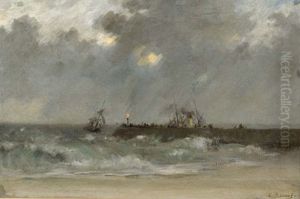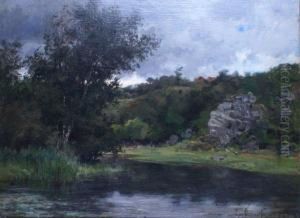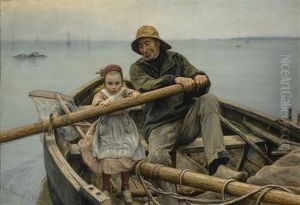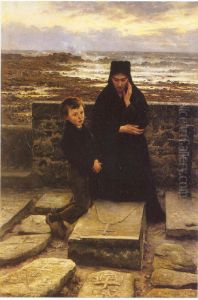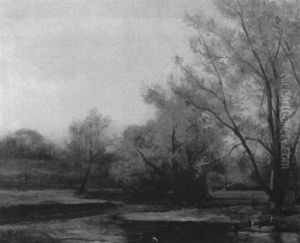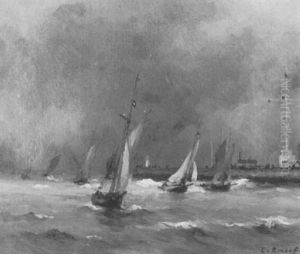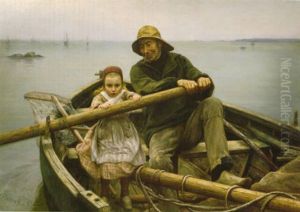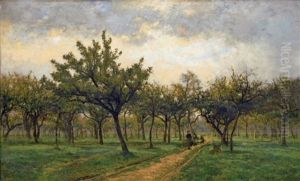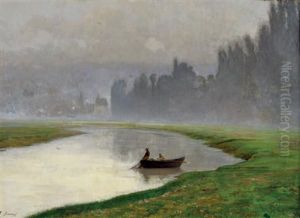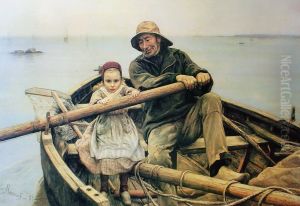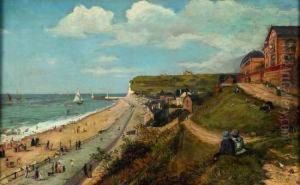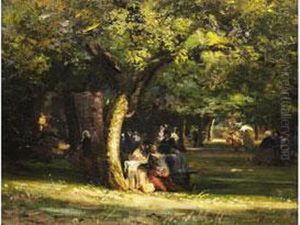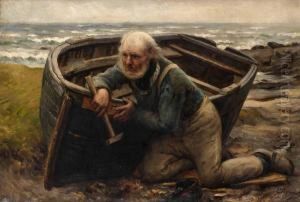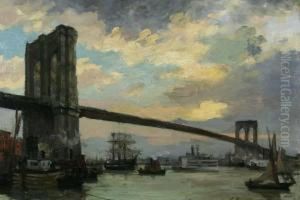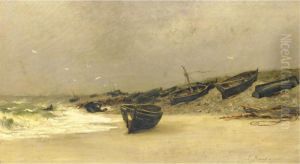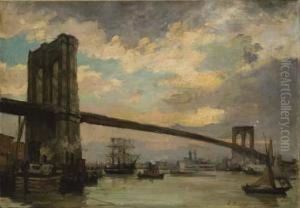Emile Renouf Paintings
Emile Renouf was a French painter born on June 23, 1845, in Paris, France. Renouf's artistic journey began under the tutelage of academic painters like Léon Cogniet and later, Gustave Boulanger. His style, deeply rooted in the Realist movement, sought to capture the essence and truth of everyday life, often focusing on the lives of fishermen and peasants.
Renouf's work gained significant recognition for its meticulous attention to detail and its compassionate portrayal of his subjects. One of his most famous paintings, 'The Helping Hand', which he completed in 1881, showcases an elderly sailor and a young girl rowing a boat, a powerful depiction of human connection and resilience. This painting, in particular, earned him widespread acclaim, encapsulating the ethos of Renouf's work: empathy, realism, and a deep connection to the sea and its people.
Throughout his career, Renouf exhibited his work at the Paris Salon, an annual art exhibition in France, which was the epitome of academic art's prestige. His contributions to the Salon helped solidify his reputation as a leading figure in the Realist movement in France. Beyond the Salon, Renouf's work was also showcased internationally, allowing his depictions of French maritime life to reach a global audience.
Despite his success, Emile Renouf's life was relatively short. He died on May 4, 1894, in Le Havre, France, at the age of 48. Though Renouf's career spanned less than three decades, his impact on the Realist movement and his portrayal of the human condition remain influential. His ability to capture the spirit and struggles of the common man, with both sensitivity and realism, has ensured his place in the annals of art history.
